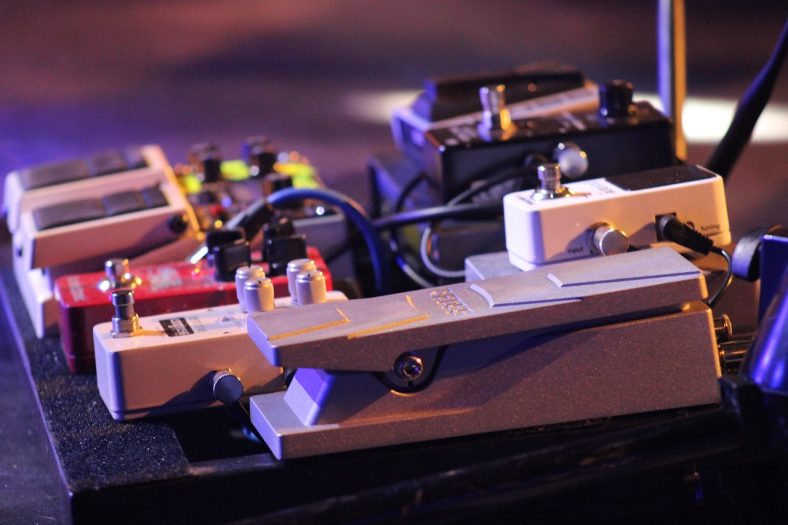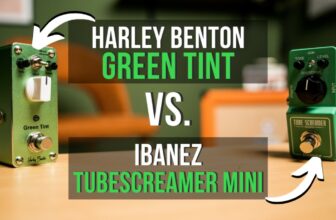Dunlop CryBaby GCB-95 Review – Wah Pedal

Contents
Dunlop CryBaby GCB-95
First wah pedals appeared in the 60’s and were popularized by guitar gods like Hendrix and Clapton. For all these years, this effect has been one of the crucial parts of the guitar tone.
Just try to remember all those iconic guitar solos in which it was used. Not to mention all those amazing funky riffs and rhythm sections.
The wah is an inevitable part of electric guitar sound for decades. Even today, it continues to evolve. We are seeing lots of new pedals, with plenty of options, different sound settings etc. However, most guitar players love to stick to the original wah sound.
For that reason, original pedals are still by far the best-selling products in the class of this guitar effect. Simply, guitarists have probably get used on its sound, but also on its amazing simplicity of use.
The CryBaby GCB-95 represents the original wah sound, established more than five decades ago. Besides legendary sound, this pedal offers the incomparable simplicity of use.
There are no pots or knobs for frequency changes and similar tweaks. This pedal delivers an original sound, without any possibility frequency changes and sound manipulation.
That is probably the biggest reason why most players still prefer the CryBaby GCB-95 or some of its derivates. So, let’s check some of the key features and see what is the reason for its huge popularity:
History
While creating the first wah pedal, designers had a little bit different intention. If you ever wondered what wah has to do with crying, it is because original pedals supposed to emulate the sound of the muted trumpet, which is colloquially known as “crying tone” or “crying trumpet”.
It turned out to be something different, something that will serve so many players in their expression, mostly in soloing and famous “wacka-wacka” funky rhythms.
In the company’s designation, GCB-95 represents the original Dunlop CryBaby wah pedal. Today, you can find lots of CryBaby models in the company’s offer and all of them represent some variation of the original sound. The history of this pedal starts in 1966 when the original CryBaby was produced by Tomas Organ/Vox.
However, this company didn’t register the nameplate, so Dunlop took it. Both manufacturers offer pretty much the same tone, so I won’t argue which one in a true original. Simply, CryBaby plays a very important role in electric guitar history.
It is an integral piece of gear for so many guitar players, including almost every guitar legend, starting from Hendrix, Gilmour, Slash, Zakk Wylde, Eddie Van Halen, Kirk Hammett etc.
Design
The Dunlop CryBaby GCB-95 looks just like the original model from five decades ago. It comes with a recognizable black housing, which is mostly made of steel. Therefore, the pedal is pretty heavy, which promises excellent durability and years of use.
Of course, there are few parts made from plastics, which also features great quality. The overall impression is that this pedal can last for decades.
The pedal works either on battery or adapter, of course at 9 Volts. Wah pedals usually don’t consume too much power (like distortion pedals, for example), so even batteries work just fine.
With an average use, you can count on weeks, when it comes to changing intervals. Still, an adapter is definitely the best option.
When it comes to controlling pots, there are no such things on this pedal. The Dunlop CryBaby GCB-95 delivers an original, I would say, pure wah tone, without a possibility for manipulation. For most players, this works perfectly fine.
Finally, a few words about the pedal mechanism. It is heavy and feels very durable under the feet. Unlike in some modern wah pedals, you won’t feel any resistance. There are no springs or other things that will bring back the pedal to the starting position.
It is a classic “teeter” design, which many players don’t like that much. In my case, it works perfectly fine. Definitely my favorite mechanism. Down below is an off/on switch. It is very hard and requires lots of pressure, so you shouldn’t be afraid of some accidental switches during solo or something like that.
Sound
Every wah pedal features a unique tone, but sometimes it seems hard to find perfect words to describe it. That’s not the case with Dunlop CryBaby GCB-95. This pedal delivers pretty much the original wah tone that you can hear from old records.
As I already mentioned, this pedal has no pots, just a default tone in the offer. It is probably the most common wah tone you can find around, which offers amazing versatility. Such sound is great for pretty much every music genre and playing style.
Still, if you want something that allows you to change frequency and overall tone characteristics, there are numerous CryBaby derivates in the offer. Dunlop has lots of wah pedals under this name in the offer, including numerous signature models, if you want to get sound of your favorite guitarist.
One of the interesting alternatives would be a model called CryBaby 535Q, which offers lots of possibilities for tone manipulation. It features things like volume boost, six different wah ranges, tone shifting abilities, and many other things. Definitely one of the most versatile wah pedals around.
Let’s go back to the GCB-95. You already know that this pedal delivers genuine wah sound from the 60’s. If you want to get the original, very identical sound, my advice would be to buy a used pedal, ideally made before the early 2000’s.
From the 60’s to 2003, or something like that, these pedals featured an original black inductor. These days, it comes with red Fasel inductor. The new inductor provides a little bit better durability but the main reason why Dunlop started to install this one is the reduction of production costs.
It works good, though affects the sound slightly. A stickler would definitely notice the difference. If you can’t find an old Dunlop CryBaby GCB-95 in good condition but still want to have that original wah tone, there is another way.
Fortunately, the company still has the original inductor in the offer, as a spare part. So, you knew what to do. Just find someone who is good with electronics, or you can do it by yourself. It isn’t that hard.
Check out our guide on how to setup a guitar pedalboard.
Verdict
The Dunlop CryBaby GCB-95 is a great pedal in many ways. First of all, it delivers a genuine CryBaby tone, used by so many guitar legends. Also, it is extremely simple to use. There are no things like pots, buttons, and similar things.
You can’t tweak the tone on this one, but that shouldn’t bother you since the default tone sounds fantastic. Finally, the build quality is on a high level, so you should have no fear of breaking it or damaging in any other way.
Finally, there is the price. Despite the legendary name and reputation, this is a very affordable wah pedal. Also, it won’t lose much of its value, so you definitely won’t lose too much money if you don’t like it.
All these characteristics make the Dunlop CryBaby GCB-95 perfect for someone who’s entering the world of wah effects. Moreover, its amazing tone makes it popular among experienced players too.
Its easiness of use is the thing that is so much appreciated by all those guitar players who like to keep things simple. Definitely a product everyone should try.






